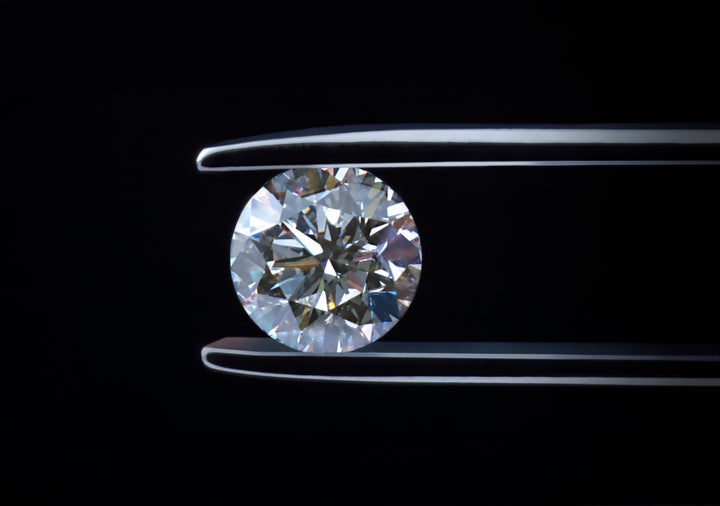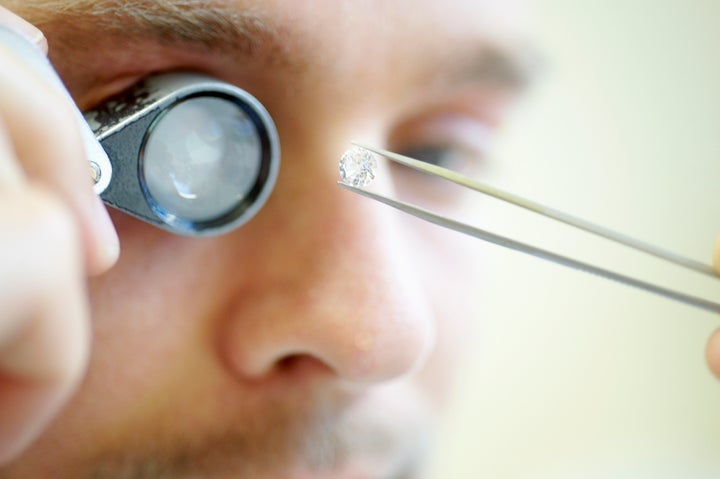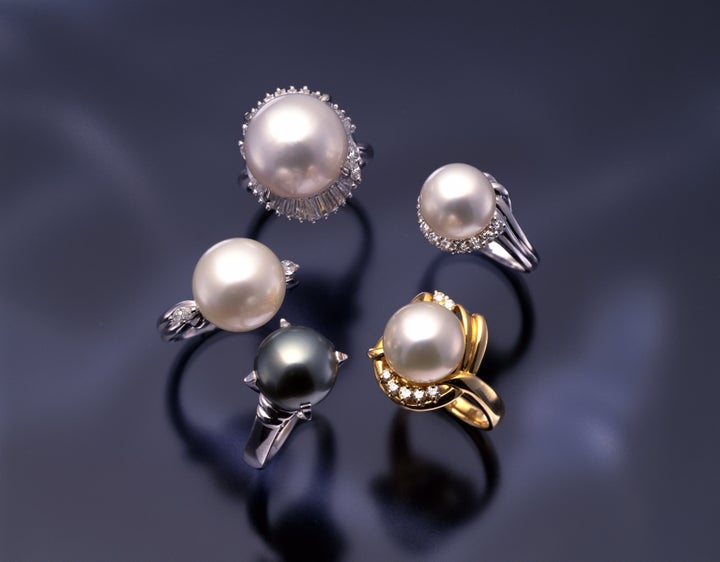
So. Time to propose. Yes, you’re sure they are The One, and no, you’re not put off by more planning than you can shake a three-tiered cake covered in edible flowers at, but the ring? Nailing a stunning sparkler that still comes in on budget isn’t easy – and with the 240,000 couples getting married in the UK each year, and the average diamond band costing over £1,000, it’s a pretty daunting procedure.
To get the lowdown on getting a beautiful rock with the most bang for your buck, we asked Alistair Smith, author of How To Buy An Engagement Ring and founder of ringspo.com, for his pearls of wisdom when it comes to selecting stones, choosing a cut and getting it as close to perfect as you can.
1. Pop the question in August
Jewellers are traditionally busiest pre-Christmas and before Valentine's Day. The summer months are slower, so you are more likely to be able to haggle effectively.
2. Set a budget that’s actually your own
The perceived one-two months’ salary spend on an engagement ring was actually invented by the big diamond, who, in shock news, want you to put down as much as possible.
Smith says: “Fast-forward a year and think about what you would feel comfortable having paid. If you think that you’ll have pangs of regret at having spent so much, then you should revise your budget down. Budget what you can afford and be honest with your partner about it.”

3. Know your Four Cs
Smith says: “Everyone who buys a ring gets to know the four Cs, but not everyone understands the relative importance of each to ensure that they get a beautiful diamond”. Here they are:
Cut: There’s no mistaking the brilliance of a beautifully-cut diamond. Round is the most expensive shape because of cutting wastage and the fact that it’s simply the most popular. Look instead at oval, pear, princess or marquise cuts for original, cheaper stones.
Colour: A pure white diamond will be graded ‘D’, and is the most expensive. Diamonds graded E to Z have subtle variations of colour. Coloured diamonds, like pink or yellow, are rare and cost a fortune.
Clarity: Don’t stress about this. Nature’s tiny imperfections are usually invisible to the naked eye, and part of your diamond’s uniqueness. Look for SI1 (slightly included 1) grades and above for quality.
Carat: This is the weight of the diamond, not the size. As Smith points out: “Jewellers know that people like nice round numbers, such as one carat, for example. But by choosing a slightly smaller diamond, say, 0.96 carats, you can bag a bargain without any visible difference in the size of the stone.”
Smith continues: “All diamonds will come with a Grading Report (a ‘certificate’), but not all grading reports are equal. Some authorities are renowned for grading diamonds higher than their true quality, which jewellers like because it means that they can charge a higher price for a lower quality diamond.”
To make sure yours is all above board, go for a ‘cert stone’ (the real deal - assessed, graded and laser-coded by an independent laboratory) with certification from a recognised issuer, such as GIA, HRD or EGL.

4. Think beyond your high street
Jewellery in big chains often have massive mark ups. Reputable jewellers in London’s Hatton Garden, centre of the UK’s wholesale diamond trade, have larger selections that are more inexpensive than your high street. You could get a bigger diamond for your budget.
5. Be seriously cautious online
You risk being taken for a spin as you cannot see the diamonds you are buying. "The key to safe buying online is to choose a well-established store which sells high quality diamonds graded by a reputable certification authority", advises Smith.
6. Consider loose diamonds
As Smith suggests: “Proposing with just a diamond takes a lot of pressure off – you still get the ‘wow’ factor of the surprise, but don’t need to worry about getting the style or the size of the ring wrong.”
If you’re brave, know exactly what you want and don’t mind ringing the doorbell of a side street diamond wholesaler, a cheaper alternative is to buy the diamond separately and have it set into a ring. You could save up to 50% taking this road.

7. Don't dismiss a non-diamond stone
Eighty per cent of engagement rings are diamonds. Why not be more original? Tanzanite, opals and even pearls can make stunning choices.
Smith concludes: "One thing to know is that these stones are all considerably softer than diamonds, so more care needs to be taken with them every day."